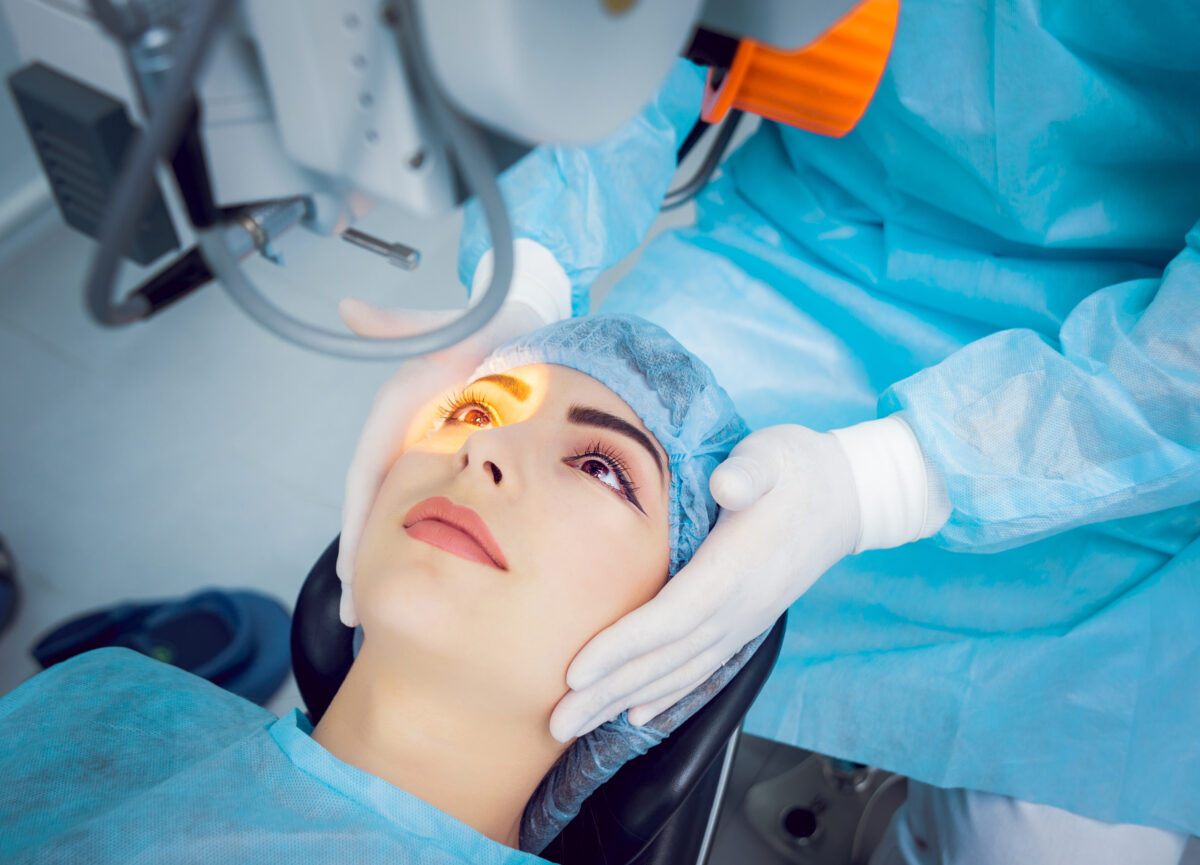Squint eye surgery, also known as strabismus surgery, is a medical procedure performed to correct the misalignment of the eyes. In a squint, the eyes do not point in the same direction — one may turn inward, outward, upward, or downward. This condition can affect vision, depth perception, and self-confidence, especially in adults. At Gupta Eye And Dental Care, we’ve helped countless patients—from children to adults—restore proper eye alignment and confidence. This guide will walk you through everything you need to know, from the squint eye surgery procedure to the recovery process, age considerations, and aftercare tips.
What is Squint Eye Surgery?
Squint eye surgery involves adjusting the muscles around the eyes to improve their alignment. The surgery aims to restore binocular vision (both eyes working together) and improve appearance.
While glasses, vision therapy, or eye exercises can help in some cases, surgery is often recommended when non-surgical treatments are not effective.
Who Needs Squint Eye Surgery?
Squint eye surgery is suitable for:
- Children with persistent squint that doesn’t improve with glasses or other treatments.
- Adults with squint caused by nerve injuries, trauma, or untreated childhood squint.
- Individuals experiencing double vision due to eye muscle problems.
- People seeking improvement in eye coordination and cosmetic appearance.
Squint Eye Surgery for Adults
Many people believe squint correction is only for children, but that’s a misconception. Squint eye surgery for adults is becoming more common for both functional and cosmetic reasons.
Benefits for adults include:
- Improved eye coordination and depth perception.
- Reduced eye strain and headaches.
- Increased self-confidence in personal and professional life.
Adults often require more post-surgery eye exercises compared to children because the brain’s adaptability decreases with age.
Ideal Squint Eye Surgery Age
There’s no strict upper age limit for squint surgery, but timing can make a difference.
- Children: Early intervention (often before the age of 6) can help the brain develop normal binocular vision.
- Adults: Surgery can be done at any age, but restoring perfect binocular vision may be more challenging.
Doctors usually recommend early treatment for the best visual outcomes, but many adults still undergo surgery successfully for cosmetic and comfort reasons.
Squint Eye Surgery Procedure
The squint eye surgery procedure is typically done under general anesthesia for children and local or general anesthesia for adults. Here’s an overview:
- Pre-Surgery Assessment
- Detailed eye examination and measurements.
- Discussion of surgical plan and risks.
- Review of medical history.
- Detailed eye examination and measurements.
- The Surgery
- The surgeon makes a small incision on the conjunctiva (the thin membrane covering the eye).
- Eye muscles are either strengthened, weakened, or repositioned to achieve correct alignment.
- Dissolvable stitches are usually used, so no removal is required.
- The surgeon makes a small incision on the conjunctiva (the thin membrane covering the eye).
- Duration
- Most surgeries take 30–90 minutes, depending on the complexity.
- Most surgeries take 30–90 minutes, depending on the complexity.
- Hospital Stay
- Usually done as a day procedure; patients can go home the same day.
- Usually done as a day procedure; patients can go home the same day.
Recovery After Squint Eye Surgery
Recovery after squint eye surgery is generally straightforward, but it’s essential to follow medical advice closely.
Common post-surgery symptoms include:
- Mild discomfort or soreness.
- Redness in the eye (may last several weeks).
- Temporary blurred or double vision.
Recovery timeline:
- First week: Rest, avoid strenuous activities, and use prescribed eye drops.
- 2–4 weeks: Redness and swelling reduce; vision starts to stabilize.
- 6 weeks: Most patients fully recover.
Squint Surgery After Care Tips
Proper squint surgery after care ensures faster healing and better results:
- Use prescribed antibiotic and anti-inflammatory eye drops as instructed.
- Avoid rubbing or touching the operated eye.
- Refrain from swimming, heavy exercise, or dusty environments for at least 2 weeks.
- Wear sunglasses outdoors to protect eyes from bright light and dust.
- Attend all follow-up appointments for monitoring.
Risks and Possible Complications
While squint eye surgery is generally safe, potential risks include:
- Infection (rare with proper aftercare).
- Overcorrection or undercorrection.
- Persistent double vision (usually temporary).
- Need for additional surgery in some cases.
- Choosing an experienced ophthalmic surgeon reduces these risks significantly.
Life After Squint Eye Surgery
Many patients notice an immediate improvement in eye alignment, but full visual coordination may take time. Some may require vision therapy after surgery to train the eyes to work together effectively.
For children, early correction can have a lasting impact on visual development. For adults, the surgery often boosts self-esteem and reduces discomfort in daily activities.
FAQs About Squint Eye Surgery
Q1: Is squint eye surgery painful?
Mild discomfort is common, but significant pain is rare. Eye drops and oral medication help manage any soreness.
Q2: Can squint return after surgery?
In some cases, squint can recur, especially if done very early in childhood. Follow-up care and vision therapy reduce the risk.
Q3: How much does squint eye surgery cost?
Costs vary based on location, surgeon expertise, and hospital facilities. It’s best to consult your local clinic for accurate pricing.
Q4: Can adults get squint surgery?
Yes. Squint eye surgery for adults is common and can improve both appearance and vision.
Q5: How long before I can return to work?
Most adults can resume office work in 3–5 days, but physically demanding jobs may require up to 2 weeks off.


